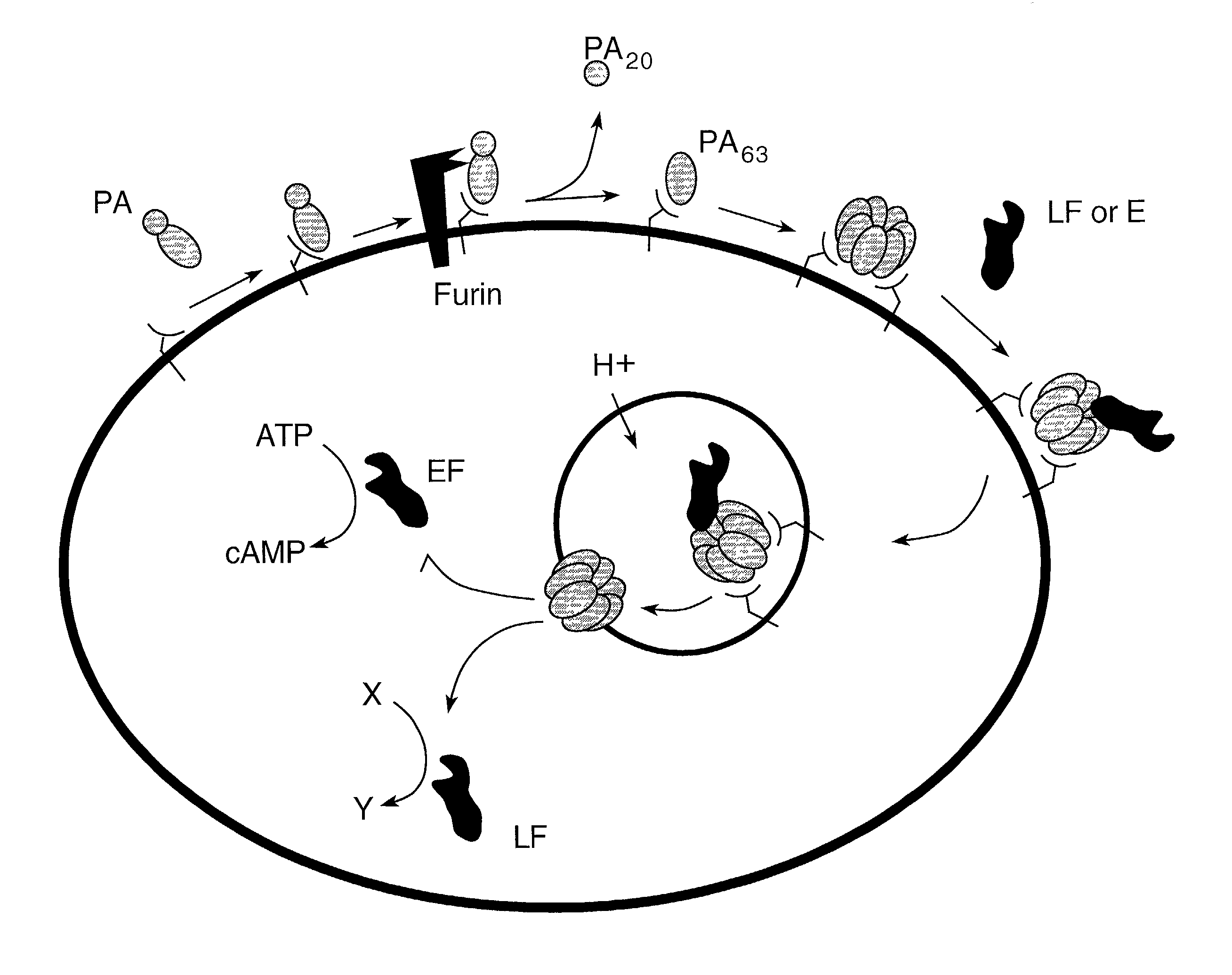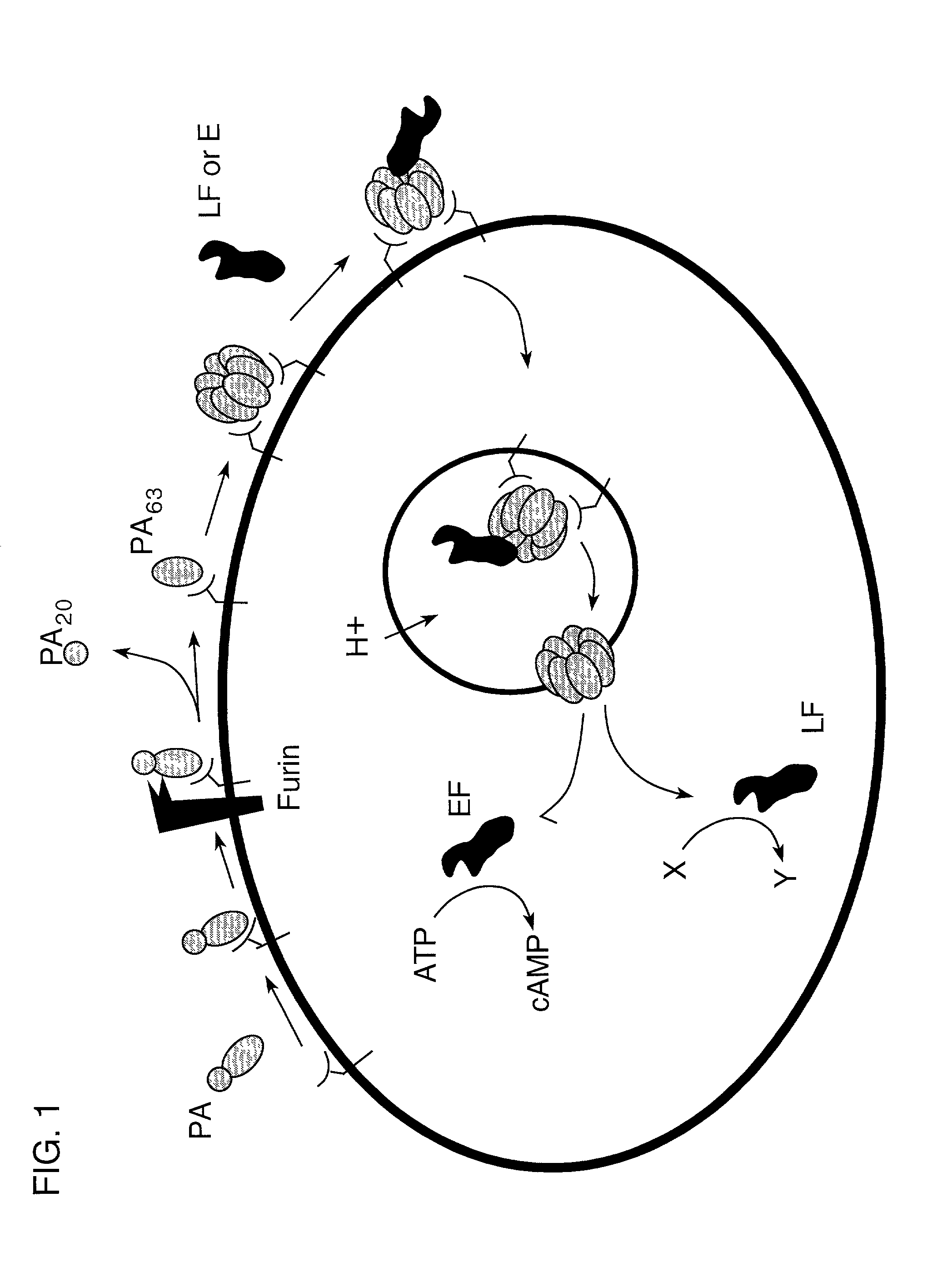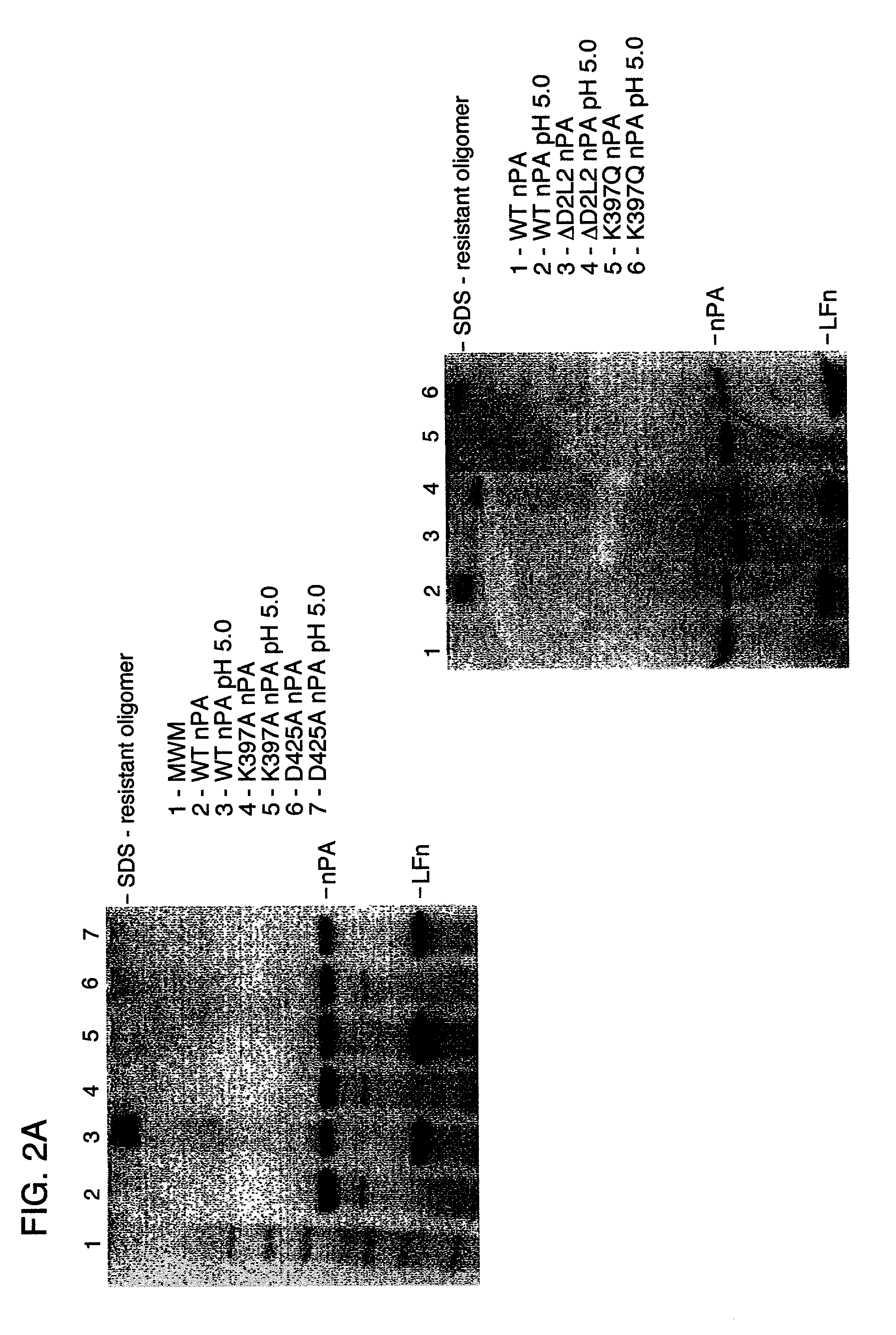Compounds and methods for the treatment and prevention of bacterial infection
a technology for bacterial infections and compounds, applied in the field of compounds and methods for the treatment of bacterial infections, can solve the problems of spores being lethal to mammals, death of the host, and the death of the host, and achieve the effects of reducing the ability to form pores, reducing the pore formation or toxin translocation, and inhibiting the pore-forming ability of naturally occurring pa
- Summary
- Abstract
- Description
- Claims
- Application Information
AI Technical Summary
Benefits of technology
Problems solved by technology
Method used
Image
Examples
example 1
General Methods
Cell Culture, Media and Chemicals
[0065]Chinese hamster ovary-K1 (CHO-K1) cells were obtained from American type culture collection. The cells were grown in HAM's F-12 supplemented with 10% calf serum, 500 units / mL penicillin G, 2 mM L-glutamine and 500 units / mL streptomycin sulfate and maintained at 5% CO2 in a humidified atmosphere. Cells were seeded into 24- or 96-well microtiter plates (Costar, Cambridge, Mass.) 16–18 hours prior to the experiment. All media for cell culture was obtained from Gibco BRL unless noted otherwise. All chemicals were obtained from Sigma Chemical Co. unless specified.
Construction and Purification of PA Proteins
[0066]The ΔD2L2 PA mutant, which does not contain amino acids 302–325 of PA, was expressed and purified as described previously (Miller et al., Biochemistry 38:10432–10441, 1999). The point mutations # 1–11 from Table 1 were constructed using the QuickChange method of site directed mutagenesis, following the manufacturer's protocol ...
example 2
Failure of Most Mutants to Form SDS-resistant Oligomers
[0079]All PA mutants # 1–12 in Table 1 and wild type PA proteins were proteolytically nicked with trypsin as described above, forming nicked PA (nPA) proteins that migrated as lower molecular species when analyzed by SDS-PAGE (FIG. 2A). Formation of SDS-dissociable prepores by PA mutants # 1–12 in Table 1 was detected by the decreased mobility in native gels of heptameric PA63 complexed with LFn compared to monomeric nPA (FIG. 2B). The formation of prepores by the K397A and D425A PA mutants was further supported by the elution of the prepores from a MonoQ column at a higher salt concentration than that which elutes monomeric PA. The nPA mutants were also analyzed for the formation of SDS-resistant oligomers. As a positive control, wild-type PA was treated with LFn. The low pH pulse converted wild-type PA into SDS-resistant oligomers, which migrated as high molecular weight complexes when analyzed by SDS-PAGE. ΔD2L2 (PA lacking r...
example 3
Failure of PA Mutants to Form Pores in Membranes
[0080]The failure of most of the PA mutants to form SDS-resistant oligomers suggested that pore formation in cell membranes would also be inhibited. Pore formation was assayed by binding nPA proteins to cells loaded with the radioactive potassium analogue, 86Rb, pulsing with low pH, and measuring the release of 86Rb into the surrounding media, as described in Example 1. Wild-type nPA induced the release of 86Rb due to the insertion of nPA into the membrane forming ion permeable pores. In contrast, none of the mutants # 1–12 in Table 1 induced 86Rb release (FIG. 3 and Table 1). Thus, the inability of most PA mutants to form SDS-resistant oligomers (Example 2) correlates with an inability of these mutants to form pores in cell membranes.
PUM
| Property | Measurement | Unit |
|---|---|---|
| pH | aaaaa | aaaaa |
| concentration | aaaaa | aaaaa |
| concentration | aaaaa | aaaaa |
Abstract
Description
Claims
Application Information
 Login to View More
Login to View More - R&D
- Intellectual Property
- Life Sciences
- Materials
- Tech Scout
- Unparalleled Data Quality
- Higher Quality Content
- 60% Fewer Hallucinations
Browse by: Latest US Patents, China's latest patents, Technical Efficacy Thesaurus, Application Domain, Technology Topic, Popular Technical Reports.
© 2025 PatSnap. All rights reserved.Legal|Privacy policy|Modern Slavery Act Transparency Statement|Sitemap|About US| Contact US: help@patsnap.com



